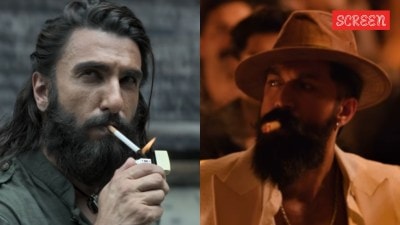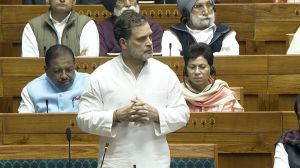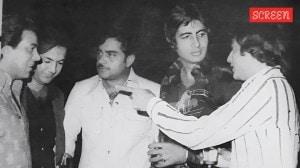Click here to follow Screen Digital on YouTube and stay updated with the latest from the world of cinema.
Zohra Sehgal: The grand old lady of Indian cinema who walked in the West so Priyanka Chopra, Aishwarya Rai could fly
Zohra Sehgal was a multi-hyphenate: an actor, a danseuse, a choreographer, and a stage performer. She defied the barriers of religion, age and gender at every step of her life and was full of zest till the very end.
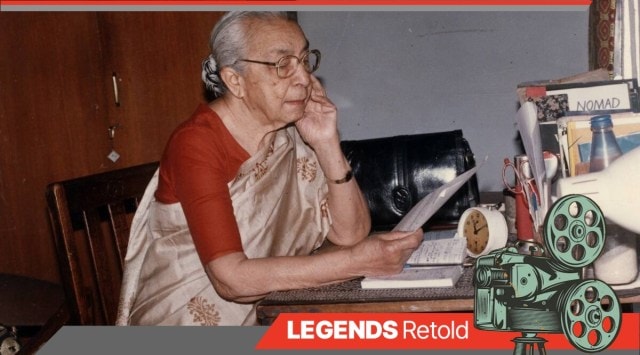 As loving and adorable as she appeared on the screen, Zohra Sehgal cherished the people around her in real life too. (Express archive photo)
As loving and adorable as she appeared on the screen, Zohra Sehgal cherished the people around her in real life too. (Express archive photo) If there were to be a physical manifestation of timeless and ageless, Zohra Sehgal would be it. She was the “grand old lady of Bollywood” who died at 102. At the time of her death, she was older than the Indian cinema. Most of us remember her as Preity Zinta’s ‘Bebe’ in Veer Zara and Amitabh Bachchan’s loud and unabashed mother in Cheeni Kum. But few know about the effervescent personality she was.
Zohra Sehgal was a multi-hyphenate: an actor, a danseuse, a choreographer, and a stage performer. I remember watching her as Aishwarya Rai’s ‘dadi’ in Hum Dil De Chuke Sanam and smiling at her playfulness and an adorable smile that made her eyes twinkle.
In her later years, she once said, “I am preparing myself for death. When I go to sleep, I try to keep myself smiling. So that when I die, I have a smile on my lips. I want an electric cremation. I don’t want any poems or fuss after that. And for heaven’s sake, don’t bring back my ashes. Flush them down the toilet if the crematorium refuses to keep them. If they tell you that I am dead, I want you to give a big laugh.”
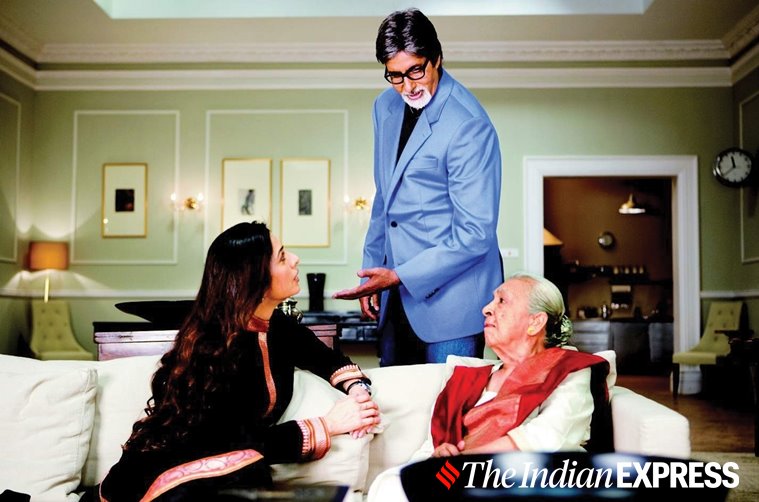 Film star Zohra Sehgal, Amitabh Bachchan and Zohra Sehgal in Cheeni Kum. (Express archive photo)
Film star Zohra Sehgal, Amitabh Bachchan and Zohra Sehgal in Cheeni Kum. (Express archive photo)
These words perfectly reflected the courage, quick wit, humour and liveliness of the doyenne of Indian theatre.
We remember Zohra as an actor who mostly did the grandmother roles in Hindi cinema, but few of us know her as a danseuse and choreographer of Guru Dutt’s debut movie Baazi.
During her lifetime, the artiste extraordinaire dabbed into many careers as she chased fame and power. The first time Zohra considered acting was when her school English teacher said about her performance, “If this child would have been on the English stage, she would earn 10 pounds a week.” On hearing this, Zohra told herself she wanted to earn those 10 pounds.
In October 1930, she left for London via road with her maternal uncle. But her mind changed even before she could put her feet on the ground. At the time, she was reading a book by renowned American dancer Isadora Duncan and after reading it, she told people around her, as per an interview to Prasar Bharti, “I don’t want to be an actress, I want to be a dancer. It is from there that my entire career changed.”
Zohra Sehgal learnt ballet and other forms of modern dance in Germany. There she met renowned Indian dancer Uday Shankar who offered her a job upon the completion of her course. It was with him that Zohra went around the world and became the lead dancer of his troupe.
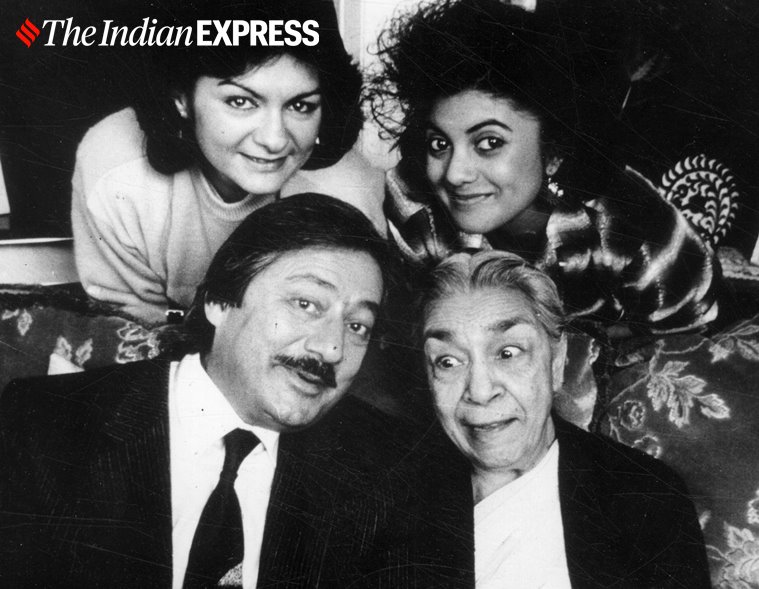 Film star Saeed Jaffrey, Zohra Sehgal, Shelly King and Rita Wolf in Tandoori Nights. (Express archive photo)
Film star Saeed Jaffrey, Zohra Sehgal, Shelly King and Rita Wolf in Tandoori Nights. (Express archive photo)
She once talked about her initial experience of the Western lifestyle and accepted that her nose was “high up in the air” as she was privileged to cross borders and find her footing in ‘vilaayat‘. She told The Times of India, “I was staying with a countess and my nose was up in the air. I pooh-poohed girls in bare nothings taking bath in water fountains, thinking they are girls from economically challenged families. Alas, I realised that those teeny-weeny things were actually called bikinis and were hot fashion items. I immediately discarded my Victorian bloomers and got into my first bikini.”
Zohra returned to India in 1940 and married a Hindu man eight years younger than her. Her brilliance got her the job of teaching dance at Prithviraj Kapoor’s Prithvi Theatre, where she worked for fourteen years. Later, she choreographed for a few Hindi films including classics like Guru Dutt’s Baazi (1951) and the dream sequence in Raj Kapoor’s Awaara (1951).
But acting was accidental to Zohra. She was never taken for lead roles because, in her opinion, she was “ugly”. She said in her biography by Ritu Menon, “My face is like Ho Chi Minh’s and my profile resembles that of Alfred Hitchock.” She was ‘wildly jealous’ of her younger sister Uzra whom she thought as the “beauty” of her family.
Zohra made her film debut with the Indian People’s Theatre Association (IPTA) production Dharti Ke Lal in 1946 and brought fame to the country with her next film ‘Neecha Nagar’, directed by Chetan Anand. The film won the Palm D’Or at the Cannes Film Festival. She also made her space in the Indian theater space with stage plays such as The Caucasian Chalk Circle, Shatranj ke Mohrey, The Waltz of the Toreador, The Heiress and The Lark.
However, she once again moved to London on a drama scholarship in 1962. There she first worked as a dresser at The Old Vic and later starred in several TV shows such as The Rescue of Pluffles (1964), BBC TV series Padosi, Jewel In The Crown, The Raj Quartet, Tandoori Nights and My Beautiful Laundrette.
While some admired her for setting an example for all the women in the entertainment business, Zohra told them, “What have I done for them consciously? Whatever I’ve done, I’ve done it for the love of acting, fame and power.”
In 1990, Zohra returned to India, and this time to stay. During her time in Hindi cinema, she transformed the sulky grandmoms of Bollywood to impish dadi maa.
In Dil Se (1998) we saw her making Shah Rukh Khan promise that he will marry soon, and in Dillagi (1999), she was Sunny and Bobby Deol’s cute grandma, with whom she also shook a leg. Then there’s the unforgettable, “Sameer, hawa ka jhonkaa” dialogue from Hum Dil De Chuke Sanam. She was also a tough-but-doting mother to Big B in Cheeni Kum. The last time we saw her on the big screen was in Sanjay Leela Bhansali’s Saawariya (2007), when she was 95. She portrayed Lillian, the landlady who is tough on her tenants and barely allows anyone to rent her house but allows Raj (Ranbir Kapoor) to stay as he reminded her of her dead son.
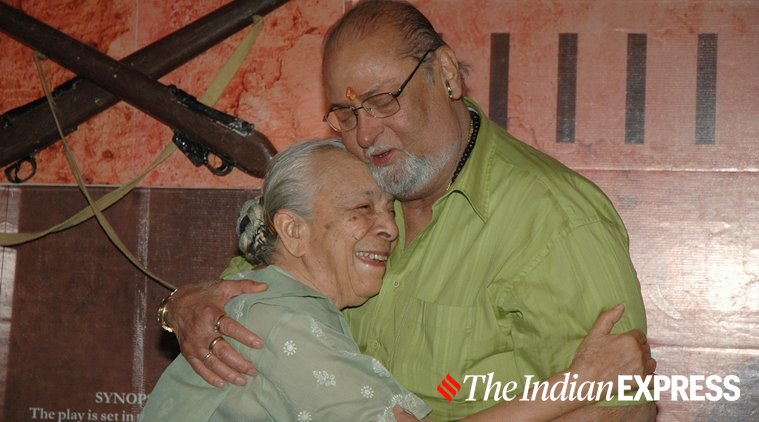 Film star Zohra Sehgal and Shammi Kapoor. Express archive photo
Film star Zohra Sehgal and Shammi Kapoor. Express archive photo
Filmmaker Mahesh Bhatt found her “truly beautiful” when he worked with Zohra in Tamanna. He said, “I’ve never seen someone age as gracefully. In a world that is so frightened of old age, her snowy white hair and face lined with wrinkles, made her truly beautiful.”
As loving and adorable as she appeared on the screen, she cherished the people around her in real life too. “One thing I really admired about Ammi was that, until recently, her New Year cards to her friends all over the world were personally sketched and drawn by her. Her colours would be red, dark blue or dark green combined with some pen and ink. She would begin this beautiful exercise somewhere mid-October and carry on till November. All her friends and relatives would receive her handmade cards in time for Christmas and the New Year and also reply,” her daughter Kiran Segal wrote in ‘Zohra Segal: Fatty’.
Today, we applaud Priyanka Chopra for being the first Indian global star and for achieving success in the West. But it was actually Zohra Sehgal who was the first Indian to achieve success internationally. She defied the barriers of religion, age and gender at every step of her life. Menon said in the biography, “Look closely and you realise that at every stage she carved out her own path, making the most of the small, mixed opportunities that came her way.”
Even in her last on-screen appearance, she was as energetic as ever – something that can be attributed to a disciplined lifestyle. During the later years of her life, she was pleased with not going into oblivion and exemplified the popular nazm of Hafeez Jullundhri’s Abhi To Main Jawan Hoon.
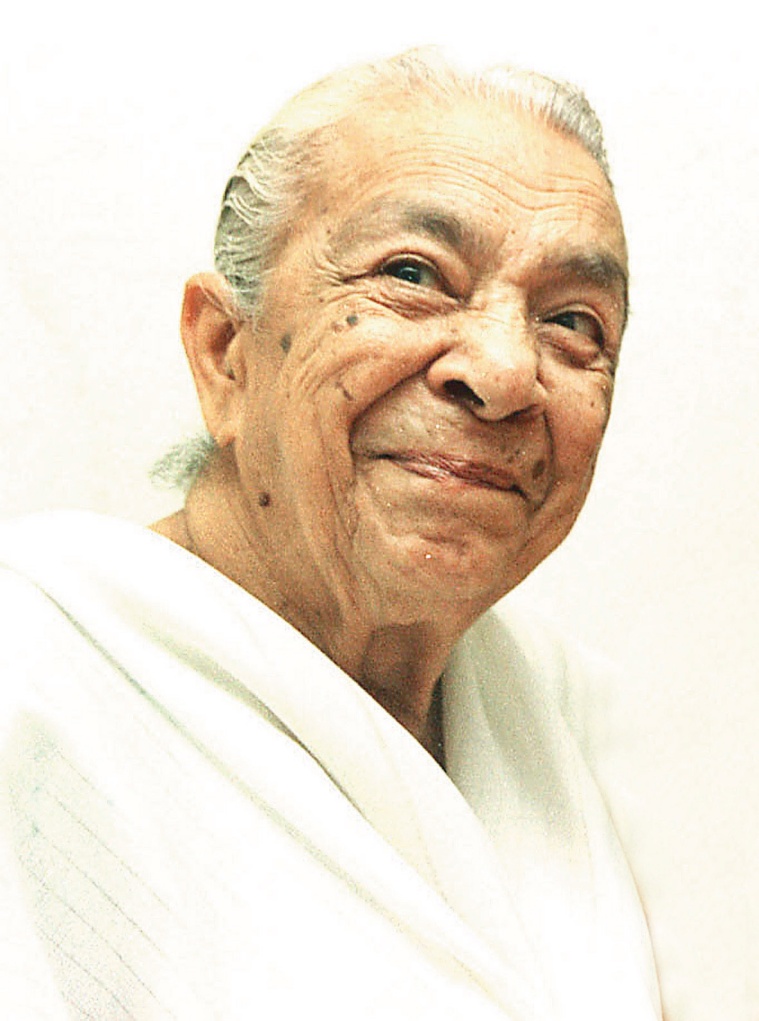 Zohra Sehgal was the first Indian star to achieve success internationally. Express archive photo
Zohra Sehgal was the first Indian star to achieve success internationally. Express archive photo
“I’ve lived to the fullest. I’ve squeezed the best out of life. A good husband, children, family and most importantly my work. I am close to 100 and even with such a shriveled-up face and figure I can boast that I’ve still got work, fame and money,” she told The Times of India.
Such was the spirit of Zohra Sehgal.
- 01
- 02
- 03
- 04
- 05



